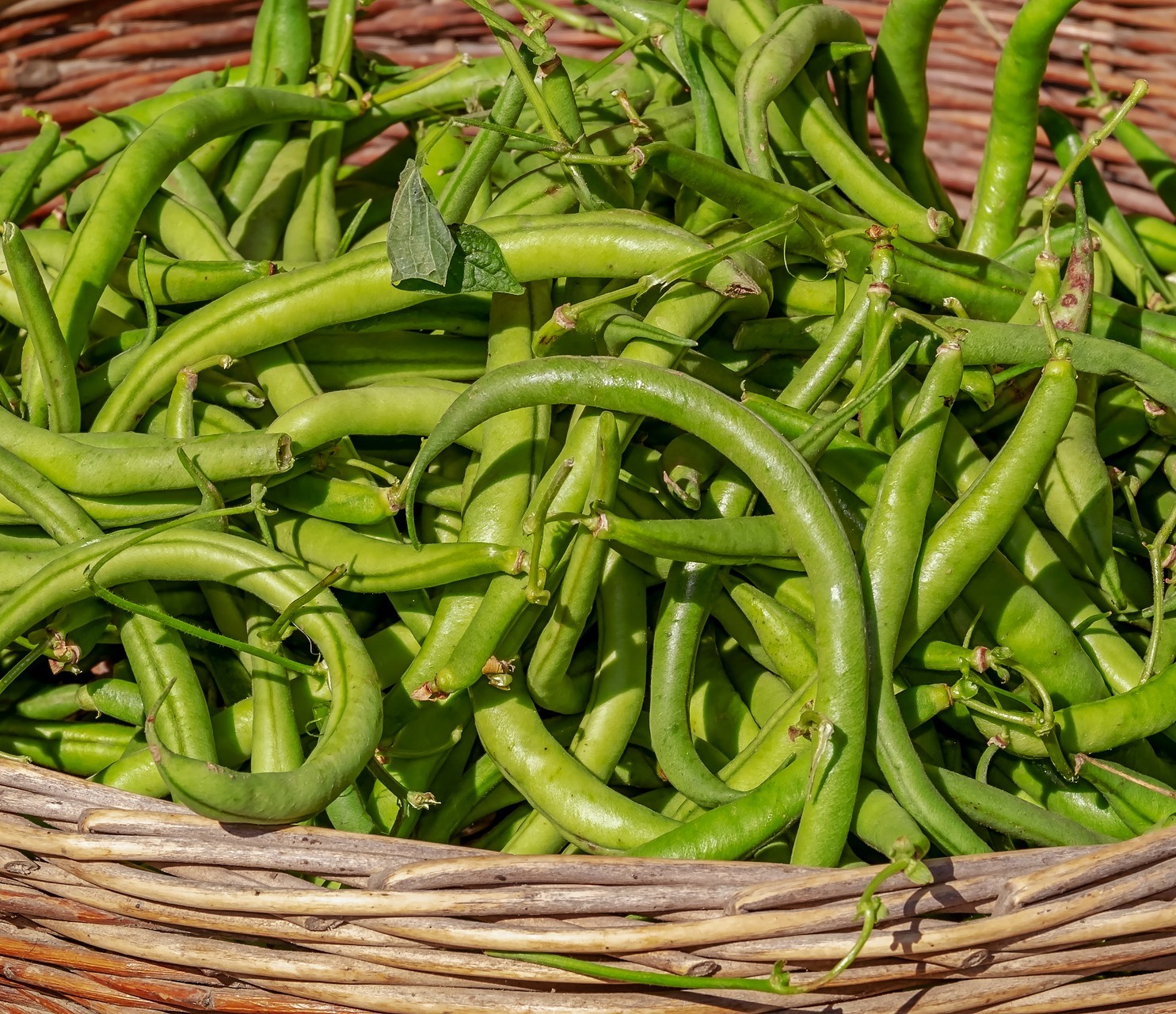
 |  |  |  |  |
| Phaseolus vulgaris – Leguminosae or Fabaceae (Pea Family) | ||||
| Beans are a crop that grow well in warm weather, so wait until after your last frost date to plant. If the soil is too cold the bean seeds will just sit in the ground and rot. Plan an average of ten to fifteen plants per person. Cold, wet weather can bring about disease. To prevent disease don’t touch healthy Bean plants after working with diseased ones and try not to touch them when there wet. Most dried beans whether bush or semi-vining, require long growing seasons. To direct-sow them plant 1” deep and space them about 6” apart. Beans are very high in protein. Like other legumes, soybeans and cowpeas are excellent green manure crops that enrich soil with organic matter and nitrogen. Some people plant a crop of soybeans just to till them under to add organic matter to there soil. | ||||
| Temperature | For Germination: 60F-85F For Growth: 60F-75F | |||
| Soil & Water Needs | PH: 6.2-7.5 Fertilizer: Light feeder. Bean plants fix Nitrogen when inoculated properly; they should require low N (nitrogen). After the plant flowers, apply fertilizer low in N (nitrogen); medium P (phosphorus) and K (potassium). Avoid low K at all times. Water: Average and constant | |||
| Measurements | Planting Depth: 1″ Root Depth: 36″-48″ Height: 10″-24″ Breadth: 4″-8″ Space between Plants: 2″-6″ Space between rows: 12″-30″; 8″ on center. | |||
| Pests | Aphid, bean leaf beetle, beet and potato leafhopper, cabbage looper, corn earworm, cucumber beetle, cutworm, flea beetle, garden webworm, Japanese beetle, leaf-footed bug, leaf miner, mexican bean beetle, mite, root-knot nematode, seed corn maggot, slug, tarnished plant bug, thrips, webworm, weevil, whitefly, wireworm. | |||
| Diseases | Anthracnose, bacterial blight and wilt, bean mosaic, common mosaic, curly top, damping off, powdery mildew, rust, southern blight, white mold, yellow mosaic. (Note: If legal, burn the diseased plants. If you can’t burn them, put them in plastic bags and put them in the garbage. ) | |||
| Allies | Some Evidence: Goosegrass, red sprangletop, sorghum mulch (for cowpeas) Uncertain: Catnip, celery, corn, goldenrod, marigold, nasturtium, oregano, potato, rosemary, savory | |||
| Companions | Beet, cabbage, carrot, celery, corn, cucumber, eggplant, peas, potato, radish, strawberry | |||
| Incompatibles | Fennel, garlic, gladiolus, onion family | |||
| Harvest | If you would like to eat the beans fresh, pick the bean pods when they are about 4″ to 6″ long and about the width of a pencil. When the first beans start to reach that size, check them every day. When beans start producing they come really fast and you can get overrun buy them. To help prevent being overrun by beans you can plant them in the spring 1 to 2 weeks apart. If you are saving the beans for replanting the bean seeds the next spring or for using them as dried beans for cooking wait until the plant’s leaves have fallen in autumn to pick dry pods or to pull the entire plant. Harvest before the first frost. Soybeans and limas, however, should be picked when any split pods are spotted because beans often drop from the shells as they dry. Cure for several weeks in a well- ventilated area, piling them on screens or slatted shelves. Beans are dry and ready to thresh when they don’t dent when bitten. Following are four methods of threshing.
| |||
| Storage Requirments for replanting bean seeds in the spring. | Remove all bad beans, you can tell which ones are bad by putting the bean seeds in a container of water and the bad ones will float to the surface. Place on shallow trays to let them dry, if you heat them, don’t go above 95F or the germination rate will go down dramatically. Store in a cool, dry area in tight jars. | |||

